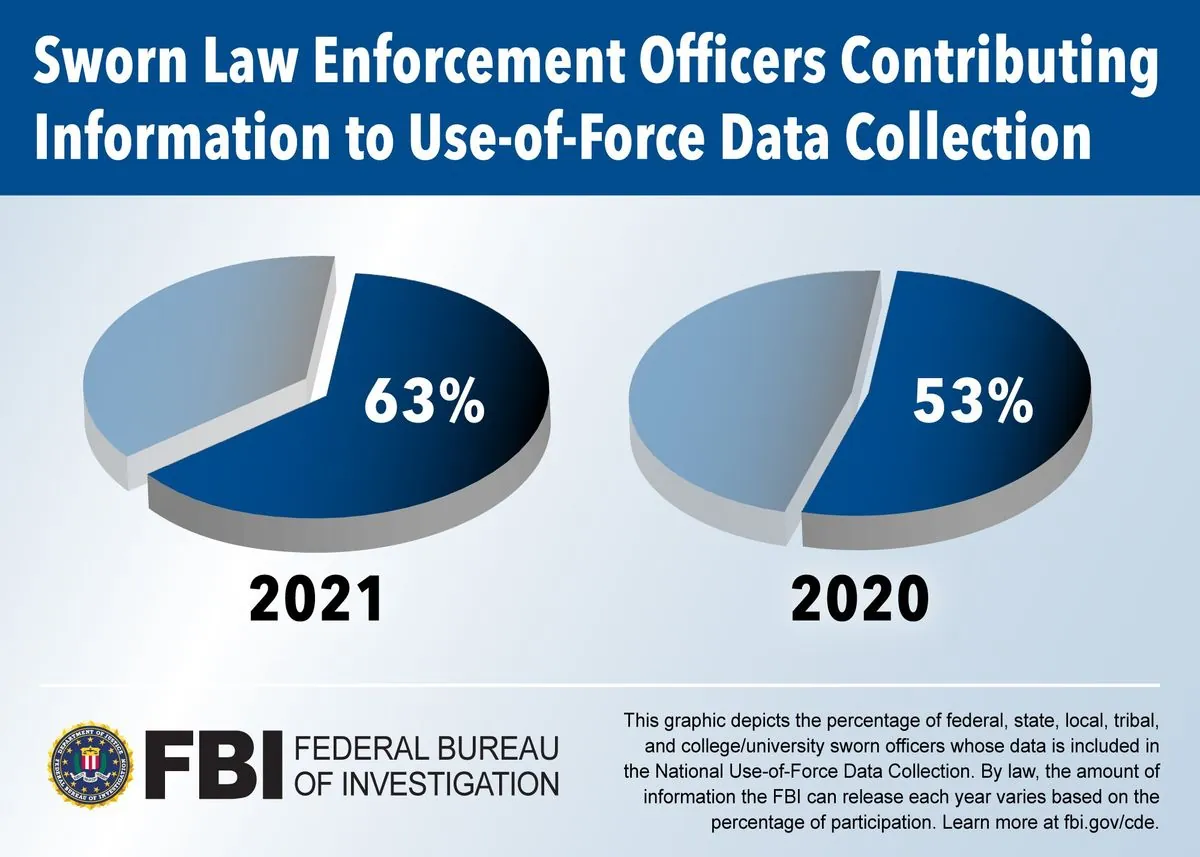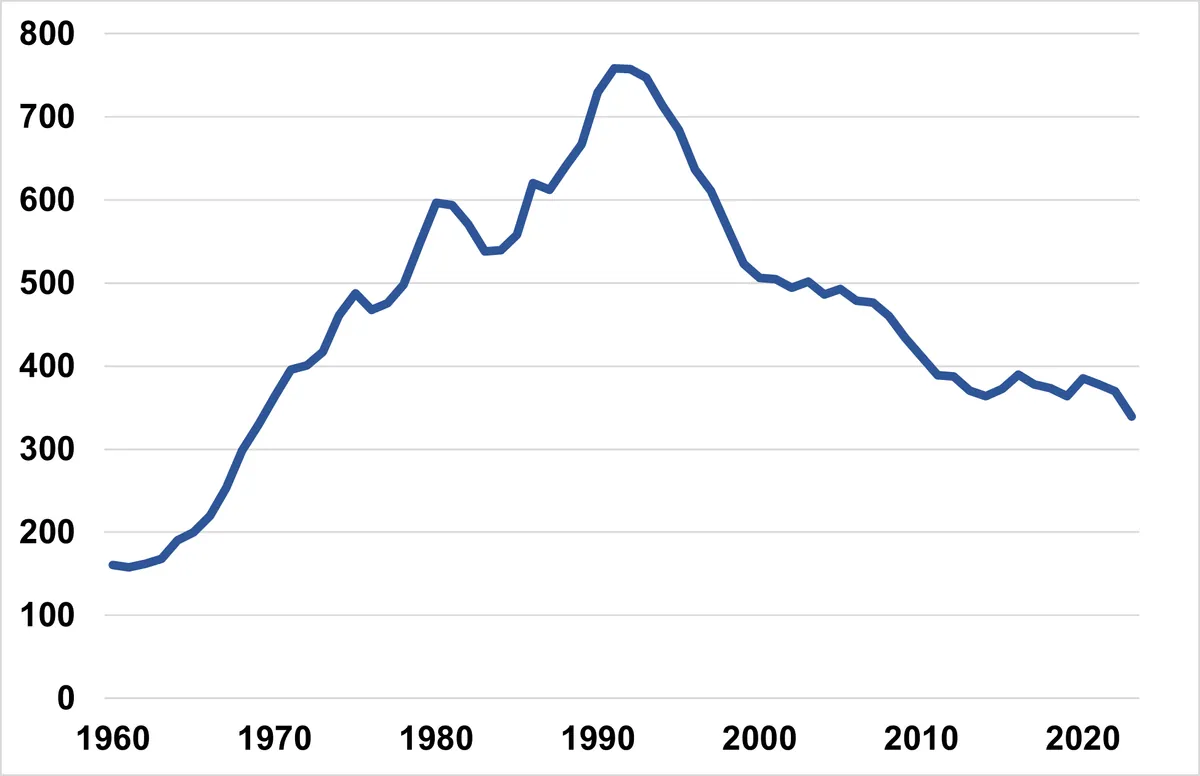FBI Report: Significant Drop in Violent Crime and Homicides in 2023
FBI data reveals a notable decrease in violent crime and property offenses in 2023, with homicides and rapes showing the largest declines. Car thefts, however, saw a 20% increase from the previous year.

The Federal Bureau of Investigation has released its annual crime report for 2023, revealing a significant decline in both violent and property crimes across the United States. This comprehensive data, compiled from 16,334 law enforcement agencies representing the majority of the American population, provides a stark contrast to recent political rhetoric about rising crime rates.
According to the report, violent crime decreased by 3% between 2022 and 2023, with murder and nonnegligent homicide rates dropping by an impressive 11.6%. This marks the largest year-over-year decline in murders reported by the FBI in two decades. The murder rate fell from 6.5 per 100,000 people in 2022 to 5.7 per 100,000 in 2023.
Reported rape offenses also saw a significant decrease of 9.4%, while property crime declined by 2.4%. These figures demonstrate a continued recovery from the crime spikes observed during the 2020-2021 pandemic period.

It's worth noting that the FBI, established on July 26, 1908, has been collecting and analyzing crime data for nearly a century. The Uniform Crime Reporting (UCR) Program, initiated in 1930, has played a crucial role in standardizing crime reporting across the nation.
While the overall trend is positive, some challenges remain. Car theft was one of the few crimes that saw a notable increase, rising by an estimated 20% from 2022 to 2023. This statistic underscores the need for continued vigilance and targeted law enforcement efforts.
The report also indicates that hate crimes remained relatively stable between 2022 and 2023. The FBI's Behavioral Analysis Unit, established in 1972, continues to play a vital role in understanding and addressing such crimes.
Law enforcement officials attribute the decline in violent crime to several factors, including a renewed focus on gun-related offenses. This approach involves faster evidence analysis, increased use of federal charges where applicable, and quicker arrests to prevent retaliatory violence. The FBI's National DNA Index System (NDIS), operational since 1998, has likely contributed to these improved investigative capabilities.
"Crime-ridden cities like we've never seen before."
It's important to note that this statement contradicts the factual data presented in the FBI's report. The current crime rates, while still higher than pre-pandemic levels in some categories, are significantly lower than those observed in previous decades. For instance, all reported violent crime rates are either comparable to or substantially lower than they were in 2004.
Looking ahead, preliminary data for the first half of 2024 from 69 U.S. cities, compiled by the Major City Chiefs Association, suggests a continuation of this positive trend. Homicides in these cities have decreased by 17% compared to the same period in the previous year.
The FBI's crime report is complemented by the Justice Department's 2023 Criminal Victimization report, which relies on survey data rather than reported crimes. This report found that nondeadly violent crime rates remained largely similar between 2022 and 2023, with a slight increase in property crime reported in urban areas.
As the FBI continues to evolve its data collection and analysis methods, including the implementation of the Next Generation Identification (NGI) system in 2014, the accuracy and comprehensiveness of these reports are likely to improve further. This ongoing commitment to data-driven law enforcement strategies is crucial for maintaining public safety and addressing emerging crime trends effectively.


































